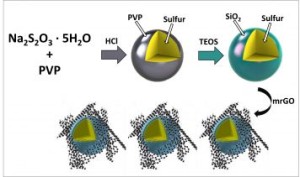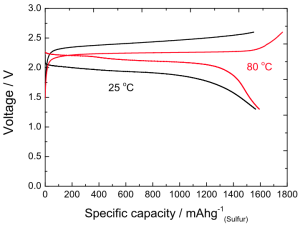Researchers from Argonne National Laboratory and Oregon State University have developed new cathode architecture for lithium-sulfur batteries. The team, led by ECS member Khalil Amine, incorporated graphene and sulfide nanoparticles to improve electrical conductivity in the promising lithium-sulfur batteries.
Lithium-sulfur batteries hold major promise as researchers explore the range of energy storage technologies. With an extremely high theoretical energy density, these batteries have the potential to store up to five times as much energy as today’s best lithium-ion battery.
But there are barriers preventing that theoretical density from becoming an actual density. Namely, the discharge products of sulfur electrodes and cycling intermediates produced.



